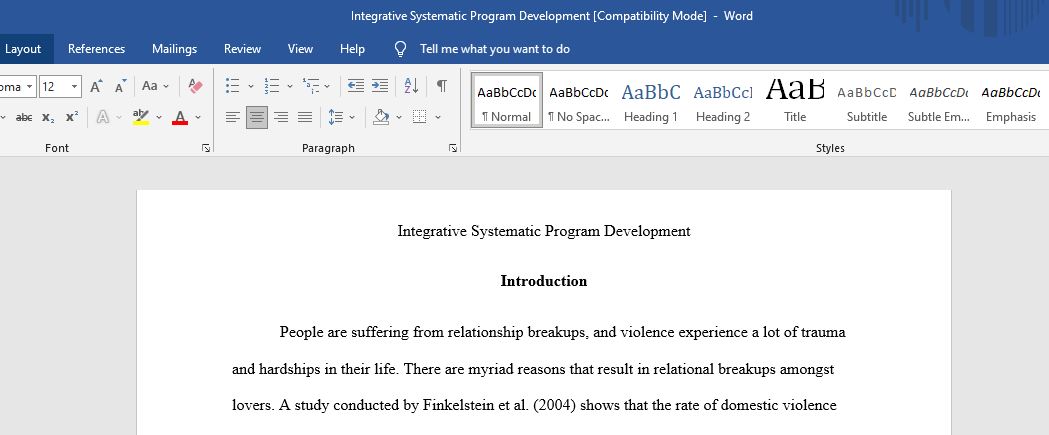Discussion Topic: Integrative Systematic Program Development
lease Read below text to use as a guide and for better understanding then see assignment attached
This module looks at specific symptoms of trauma that become the focus of many types of trauma treatments. As you prepare your signature assignment, think about the role of empathy and “biological empathy” in understanding dissociation and shame. Because your signature assignment has elements of macro and micro approaches to the treatment of trauma, it is wise to consider how you might organize a program or critique an existing program. For example, at the micro level, does the program address the symptoms of dissociation and shame? This might be addressed in the section on empathy. At the macro level, is the program organized around stages of the process or larger systems that need to be involved?
The following summary of a crisis intervention program is one example of a program that is organized around stages. Also, the CAMS approach to suicide is an example of a program that organizes outside systems.
Roberts’ Seven-Stage Crisis Intervention Model
There are seven critical stages through which clients typically pass on the road to crisis stabilization, resolution, and mastery. These stages, listed below, are essential, sequential, and sometimes overlapping in the process of crisis intervention:
Stage I: Psychosocial and Lethality Assessment
The crisis worker must conduct a swift but thorough biopsychosocial assessment. At a minimum, this assessment should cover the client’s environmental supports and stressors, medical needs and medications, current use of drugs and alcohol, and internal and external coping methods and resources.
Stage II: Rapidly Establish Rapport
Rapport is facilitated by the presence of counselor-offered conditions such as genuineness, respect, and acceptance of the client. This is also the stage in which the traits, behaviors, or fundamental character strengths of the crisis worker come to fore in order to instill trust and confidence in the client. Although a host of such strengths have been identified, some of the most prominent include good eye contact, nonjudgmental attitude, creativity, flexibility, positive mental attitude, reinforcing small gains, and resiliency.
Stage III: Identify the Major Problems or Crisis Precipitants
Crisis intervention focuses on the client’s current problems, which are often the ones that precipitated the crisis.
Stage IV: Deal With Feelings and Emotions
There are two aspects to Stage IV. The crisis worker strives to allow the client to express feelings, to vent and heal, and to explain her or his story about the current crisis situation. To do this, the crisis worker relies on the familiar “active listening” skills like paraphrasing, reflecting feelings, and probing.
Stage V: Generate and Explore Alternatives
This stage can often be the most difficult to accomplish in crisis intervention. If Stage IV has been achieved, the client in crisis has probably worked through enough feelings to re-establish some emotional balance. Now, clinician and client can begin to put options on the table, like a no-suicide contract or brief hospitalization, for ensuring the client’s safety; they can discuss alternatives for finding temporary housing and consider the pros and cons of various programs for treating chemical dependency. It is important to keep in mind that these alternatives are better when they are generated collaboratively and when the alternatives selected are “owned” by the client.
Stage VI: Implement an Action Plan
Here is where strategies become integrated into an empowering treatment plan or co-ordinated intervention. Concrete action plans taken at this stage (e.g.,entering a 12-step treatment program, joining a support group, seeking temporary residence in a women’s shelter) are critical for restoring the client’s equilibrium and psychological balance.

word limit:2280
